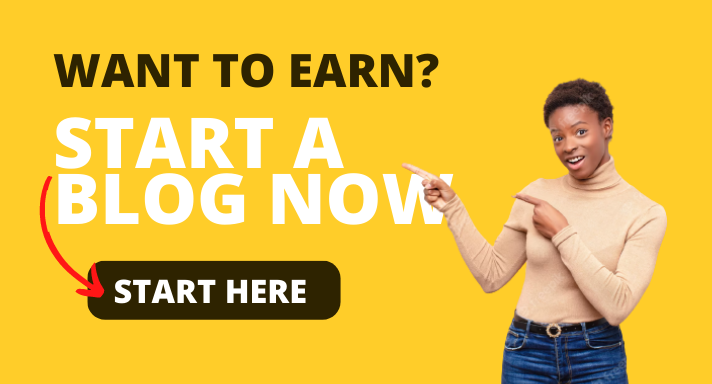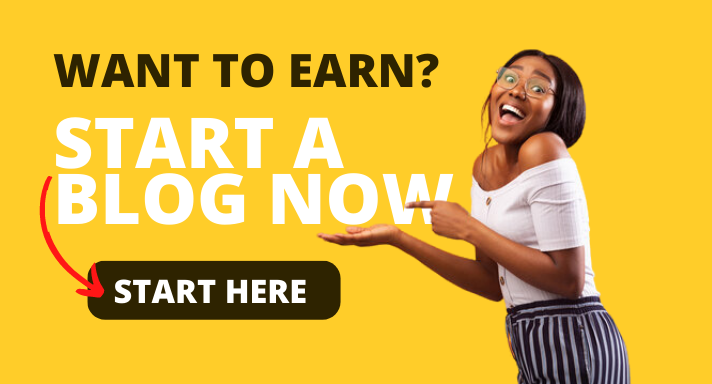Ever felt like you’re stuck in a content creation rut?
I get it.
You’ve been churning out blog posts like there’s no tomorrow, but your engagement metrics are flatlining.
It’s time to shake things up.
In this post, we will look the most common types of content creation that can breathe new life into your marketing strategy.
Why should you care about diversifying your content?
Simple.
Different content types appeal to different audience segments, learning styles, and consumption habits.
By mastering various content formats, you’ll:
- Reach a wider audience
- Boost engagement across platforms
- Establish your brand as innovative and adaptable
- Cater to diverse user preferences
Ready to expand your content creation toolkit?
How We Picked These Content Types
Before we proceed with this post, let’s discuss how I selected these content types.
Here’s my criteria:
- Effectiveness: Each content type has proven ROI in various industries.
- Versatility: These formats can be adapted to different niches and business sizes.
- Accessibility: You don’t need a Hollywood budget to create most of these content types.
- Engagement potential: Each format has unique ways to captivate and retain audience attention.
Keep in mind:
- This list isn’t exhaustive
- Some content types may overlap
- The effectiveness of each type can vary based on your specific audience and goals
Now, let’s break down these content types and see how they can supercharge your marketing efforts.
1. Written Content
When we talk about types of content creation, written content is often the first thing that comes to mind.
And for good reason.
Written content forms the foundation of most digital marketing strategies.
Why?
Because it’s:
- Easily searchable
- Great for SEO
- Highly shareable
- Cost-effective to produce
Let’s break down some key forms of written content:
Blog Posts
Blog posts are the workhorse of content marketing.
They’re versatile, allowing you to:
- Educate your audience
- Showcase your expertise
- Drive organic traffic through SEO
Pro tip: Don’t just write for the sake of writing. Every blog post should solve a specific problem for your audience.
Articles
Articles are similar to blog posts but often more in-depth and formal.
They’re great for:
- Establishing thought leadership
- Getting backlinks from authoritative sites
- Providing comprehensive information on complex topics
Key difference: While blog posts often have a conversational tone, articles tend to be more serious and research-oriented.
Whitepapers
Whitepapers are detailed reports that present a problem and provide a solution.
They’re excellent for:
- Lead generation
- Establishing industry authority
- Educating prospects about complex products or services
Remember: Whitepapers require significant research and effort, but they can be powerful tools for B2B marketing.
Ebooks
Ebooks are longer-form content that dive deep into a specific topic.
Benefits include:
- Positioning yourself as an expert
- Creating a valuable lead magnet
- Repurposing content from multiple blog posts
Pro tip: Break your ebook into easily digestible chapters. Use plenty of visuals to keep readers engaged.
When it comes to written content, quality trumps quantity every time.
Don’t fall into the trap of churning out mediocre content just to hit a posting schedule.
Instead, focus on creating high-value pieces that truly resonate with your audience.
2. Visual Content
Visual content is king.
Why?
Because our brains process visual information 60,000 times faster than text.
Here are some powerful visual content types:
Infographics
Infographics combine data, design, and storytelling into a powerful visual package.
They’re great for:
- Simplifying complex information
- Making statistics more engaging
- Earning backlinks and shares
Pro tip: Don’t overload your infographics. Focus on one main idea and use design to enhance understanding, not complicate it.
Images and Graphics
From custom illustrations to memes, visual graphics can:
- Break up text-heavy content
- Increase social media engagement
- Enhance brand recognition
Key point: Consistency in style and color palette across your graphics can significantly boost brand recall.
Videos
Video content is booming, and for good reason.
It’s:
- Highly engaging
- Great for explaining complex topics
- Perfect for showcasing products or services
Types of videos to consider:
- Explainer videos
- Product demonstrations
- Behind-the-scenes footage
- Customer testimonials
Remember: You don’t need Hollywood-level production. Authenticity often trumps polish when it comes to connecting with your audience.
Visual content isn’t just about looking pretty.
It’s about communicating ideas quickly and effectively.
When creating visual content, always ask yourself: “Does this enhance understanding or just add clutter?”
3. Audio Content
Audio content has seen a massive surge in popularity.
Why?
Because it allows people to consume content while multitasking.
Let’s look at two primary forms of audio content:
Podcasts
Podcasts are episodic audio series that cover a wide range of topics.
Benefits include:
- Building a loyal audience
- Establishing thought leadership
- Creating content that can be repurposed into other formats
Pro tip: Consistency is key with podcasts. Set a regular publishing schedule and stick to it.
Audiobooks
Audiobooks allow you to reach readers who prefer listening over reading.
They’re great for:
- Repurposing long-form written content
- Reaching new audience segments
- Creating a premium product offering
Key point: Good narration can make or break an audiobook. If your budget allows, consider hiring a professional voice actor.
Audio content allows you to connect with your audience more discreetly.
Your voice, tone, and personality come through, helping to build stronger relationships with your listeners.
4. Interactive Content
Interactive content takes engagement to the next level.
It turns passive consumers into active participants.
Here are some popular types:
Quizzes and Polls
Quizzes and polls are excellent for:
- Boosting engagement
- Gathering valuable user data
- Creating shareable content
Pro tip: Use quiz results to segment your audience and provide personalized follow-up content.
Interactive Infographics
These combine the power of visual storytelling with user interaction.
Benefits include:
- Increased time on page
- Better information retention
- A more engaging user experience
Remember: Keep the interaction simple and intuitive. Frustrating user experiences will drive people away.
Calculators and Tools
Interactive tools solve specific problems for your audience.
They’re great for:
- Demonstrating your expertise
- Providing immediate value to users
- Generating qualified leads
Key point: The more useful and relevant your tool, the more likely users are to share it and return to it.
Interactive content isn’t just about novelty.
It’s about providing value in a way that actively involves your audience.
When done right, it can significantly boost engagement and conversion rates.
5. Social Media Content
Social media is where many of your potential customers spend a significant portion of their time.
Ignoring it is not an option.
Let’s break down some key types of social media content:
Posts
Regular posts are the bread and butter of social media content.
They can include:
- Text updates
- Images
- Short videos
- Links to other content
Pro tip: Each platform has its own “language”. Tailor your content to fit the norms and expectations of each platform.
Stories
Stories are short-lived content that disappear after 24 hours.
They’re great for:
- Sharing behind-the-scenes content
- Creating a sense of urgency
- Boosting engagement through polls and questions
Key point: Use stories to showcase your brand’s personality and create a more personal connection with your audience.
Live Streams
Live video allows real-time interaction with your audience.
Benefits include:
- Increased engagement
- Building trust and authenticity
- Immediate feedback from your audience
Remember: Prepare thoroughly for live streams, but don’t script everything. Authenticity is key.
Social media content should be part of a larger strategy, not an afterthought.
Each piece of content should have a purpose, whether it’s driving traffic, boosting engagement, or showcasing your brand personality.
6. User-Generated Content
User-generated content (UGC) is created by your customers or followers, not your brand.
It’s powerful because it provides social proof and authenticity.
Let’s look at some types of UGC:
Reviews
Customer reviews are crucial for building trust.
They:
- Provide honest feedback about your products or services
- Help potential customers make informed decisions
- Can improve your search engine rankings
Pro tip: Encourage satisfied customers to leave reviews, but never fake them. Authenticity is key.
Testimonials
Testimonials are more in-depth than reviews and often focus on the overall experience with your brand.
They’re great for:
- Showcasing success stories
- Addressing potential objections
- Building credibility
Key point: Video testimonials can be particularly powerful, as they put a face to the story.
Social Media Mentions
When customers discuss your brand on social media, it’s free advertising.
Benefits include:
- Increased brand awareness
- Authentic promotion
- Content for you to reshare
Remember: Always ask for permission before resharing someone’s content, and give credit where it’s due.
User-generated content is like word-of-mouth marketing for the digital age.
It’s compelling because people trust other consumers more than they trust brands.
Encourage and showcase UGC, but remember to respect your customers’ rights and privacy.
7. Email Content
Email might seem old school, but it remains one of the most effective marketing channels.
Why?
Because it allows direct, personalized communication with your audience.
Let’s explore some types of email content:
Newsletters
Regular newsletters keep your audience updated and engaged.
They can include:
- Industry news
- Company updates
- Curated content
- Exclusive offers
Pro tip: Segment your email list to provide more relevant content to different audience groups.
Promotional Emails
These emails are designed to drive specific actions, like making a purchase or signing up for an event.
Key elements include:
- Clear call-to-action
- Compelling offer
- Sense of urgency
Key point: Don’t overdo promotional emails. Too many can lead to unsubscribes.
Drip Campaigns
Drip campaigns are a series of automated emails sent based on specific timelines or user actions.
They’re great for:
- Nurturing leads
- Onboarding new customers
- Re-engaging inactive users
Remember: Personalization is crucial in drip campaigns. Use data to tailor your messages to each recipient’s needs and behaviors.
Email content should provide value, not just promote your products.
Focus on building relationships and trust with your subscribers.
When you do that, they’ll be more receptive when you do have something to sell.
Content Types at a Glance
Here’s a quick comparison of the content types we’ve discussed:
| Content Type | Time Investment | Cost | SEO Impact | Engagement Potential | Skill Level Required |
|---|---|---|---|---|---|
| Written | High | Low | High | Medium | Medium |
| Visual | Medium | Medium | Medium | High | Medium to High |
| Audio | High | Medium | Low | High | Medium to High |
| Interactive | High | High | Medium | Very High | High |
| Social Media | Low to Medium | Low | Low | High | Low to Medium |
| UGC | Low | Low | Medium | High | Low |
| Medium | Low | N/A | Medium to High | Medium |
How to Choose the Right Types of Content Creation
Selecting the right content type isn’t about following trends.
It’s about understanding your:
- Audience preferences
- Marketing goals
- Available resources
Here’s how to approach it:
Know Your Audience
- Where do they hang out online?
- How do they prefer to consume content?
- What problems are they trying to solve?
Pro tip: Use surveys, analytics, and social listening to gain insights into your audience’s preferences.
Define Your Goals
Different content types serve different purposes:
- Want to boost SEO? Focus on written content.
- Looking to increase engagement? Try interactive or visual content.
- Need to establish thought leadership? Consider podcasts or whitepapers.
Assess Your Resources
Be realistic about what you can produce consistently:
- Do you have the necessary skills in-house?
- What’s your content creation budget?
- How much time can you dedicate to content creation?
Remember: It’s better to do a few content types well than to spread yourself too thin trying to do everything.
Experiment and Iterate
Don’t be afraid to try new content types:
- Start small
- Measure results
- Double down on what works
- Learn from what doesn’t
The key is to stay agile and responsive to your audience’s needs and preferences.
Key Takeaways
Let’s recap the main points we’ve covered about types of content creation:
- Diversify your content: Different types appeal to different segments of your audience.
- Quality over quantity: Focus on creating high-value content, regardless of the format.
- Know your strengths: Play to your team’s skills and resources when choosing content types.
- Understand your audience: Let your audience’s preferences guide your content strategy.
- Set clear goals: Align your content types with your marketing objectives.
- Be consistent: Whatever content types you choose, maintain a regular publishing schedule.
- Measure and adapt: Use analytics to understand what’s working and adjust your strategy accordingly.
Conclusion
Mastering various types of content creation is no longer optional — it’s essential.
By diversifying your content strategy, you can:
- Reach a wider audience
- Engage users more effectively
- Stand out in a crowded digital landscape
Remember, there’s no one-size-fits-all approach to content creation.
What works for one brand may not work for another.
The key is to understand your audience, set clear goals, and continuously experiment and refine your approach.
So, which content type will you try next?
Whether it’s starting a podcast, creating an interactive tool, or leveraging user-generated content, the possibilities are endless.
Don’t be afraid to step out of your comfort zone and try something new.
Your audience — and your bottom line — will thank you for it.


